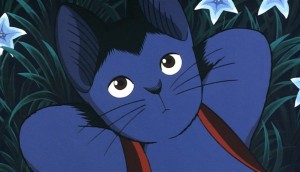A Blue Cat on the Galactic Railroad: Anime and Cosmic Subjectivity
by Paul Roquet
Representations 128
“Looking up at the stars,” begins Roquet, “does not demand much in the way of movement: the muscles in the back of the neck contract, the head lifts. But in this simple turn from the interpersonal realm of the Earth’s surface to the expansive spread of the night sky, subjectivity undergoes a quietly radical transformation. Social identity falls away as the human body gazes into the light and darkness of its own distant past. To turn to the stars is to locate the material substrate of the self within the vast expanse of the cosmos.
“In the 1985 adaptation of Miyazawa Kenji’s classic Japanese children’s tale Night on the Galactic Railroad by anime studio Group TAC, this turn to look up at the Milky Way comes to serve as an alternate horizon of self-discovery for a young boy who feels ostracized at school and has difficulty making friends. The film experiments with the emergent anime aesthetics of limited animation, sound, and character design, reworking these styles for a larger cultural turn away from social identities toward what I will call cosmic subjectivity, a form of self-understanding drawn not through social frames, but by reflecting the self against the backdrop of the larger galaxy.”
In the 1980s, Japanese animation shifted its focus away from the social self and toward cosmic subjectivity, the framing of intensely personal emotions within the larger impersonal expanse of the universe. Roquet’s essay examines Night on the Galactic Railroad as a signal moment in this shift, as it emphasizes the interpenetration of the microcosmic and macrocosmic through a range of experiments with “limited” animation, sound design, and character design that would in turn influence the imaginary worlds of later anime.
PAUL ROQUET is an Andrew W. Mellon Fellow in the Humanities at Stanford University. He is currently finishing a book on ambient media, therapy culture, and the aesthetics of atmosphere in neoliberal Japan.
